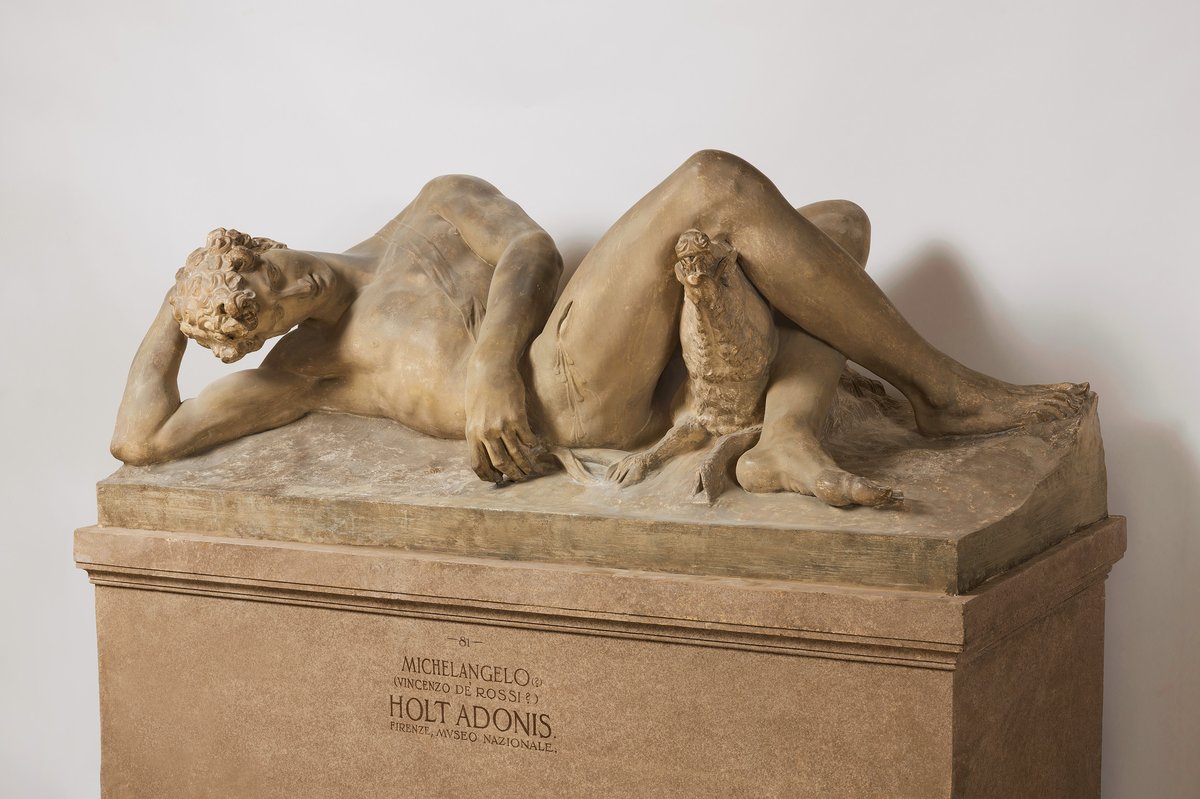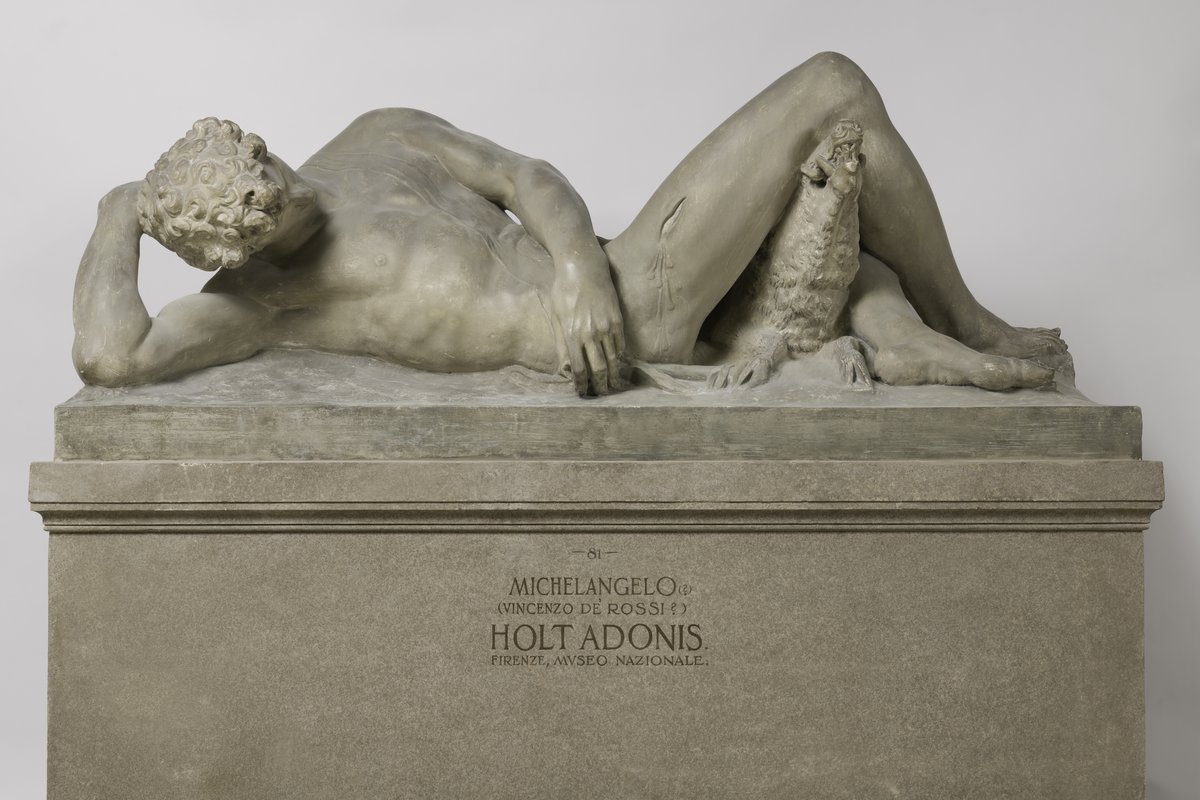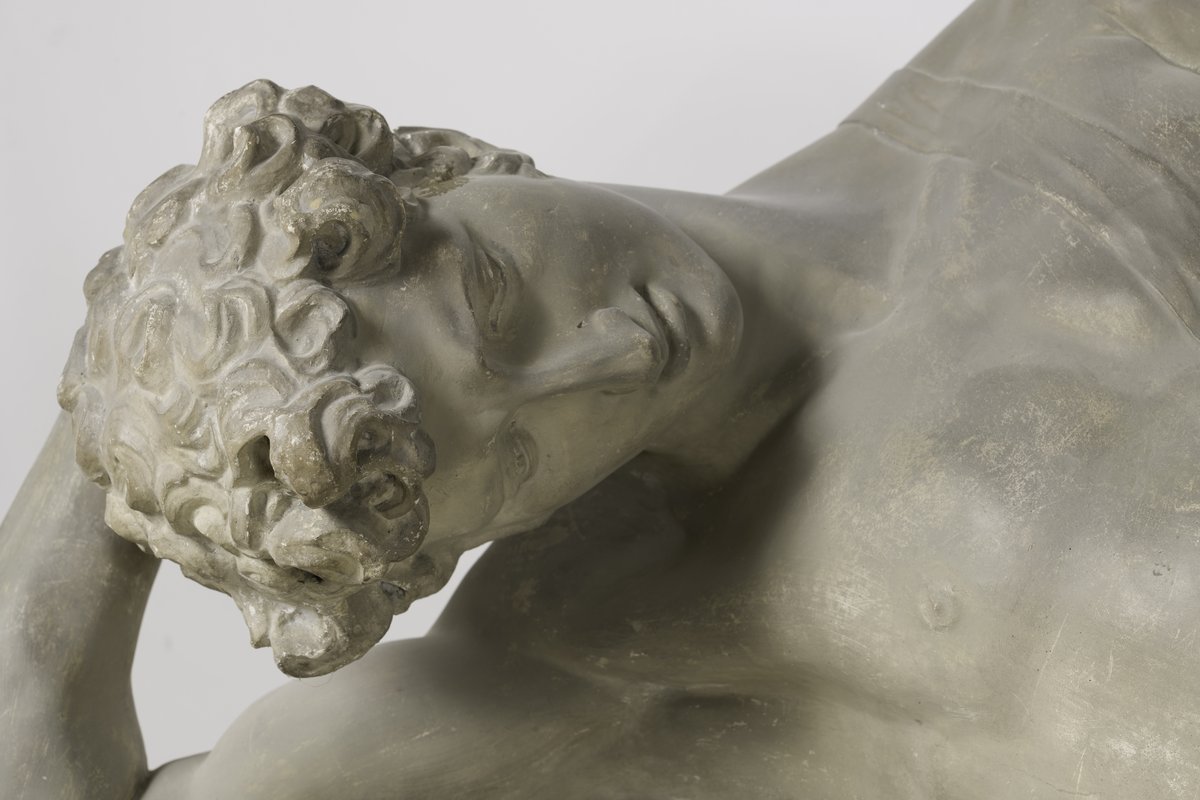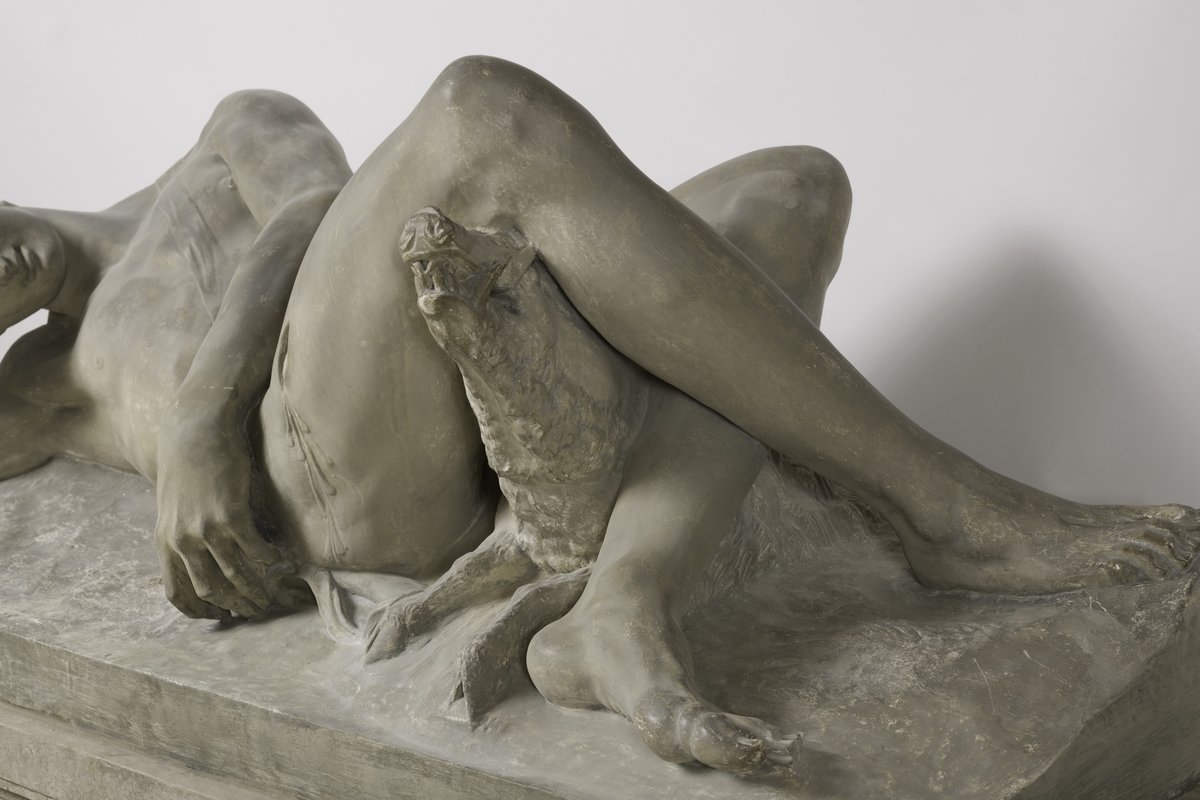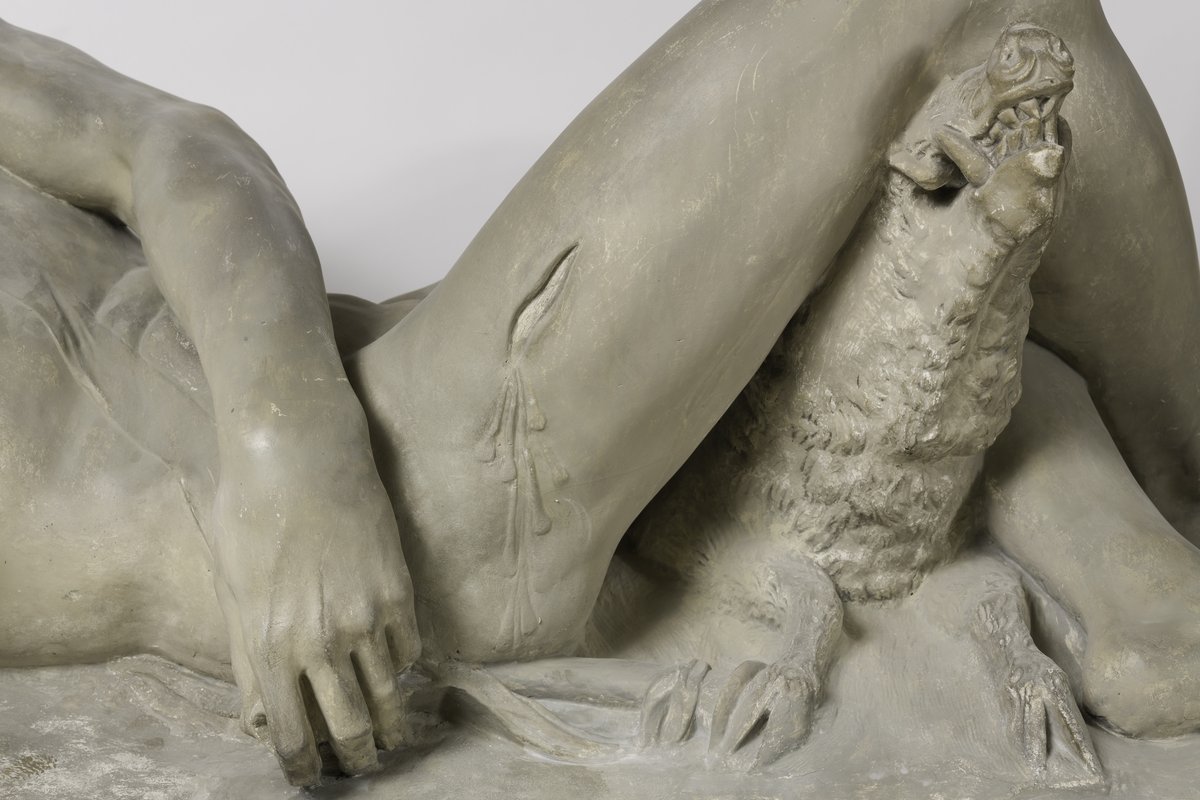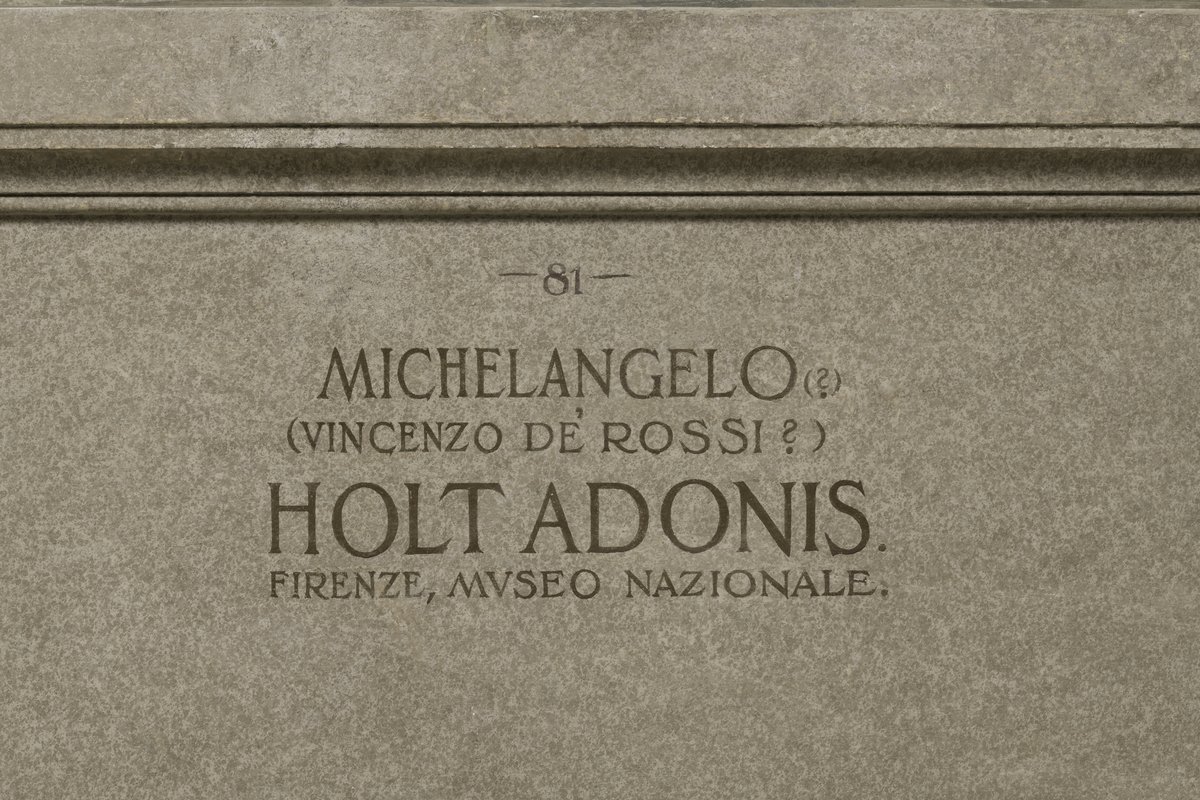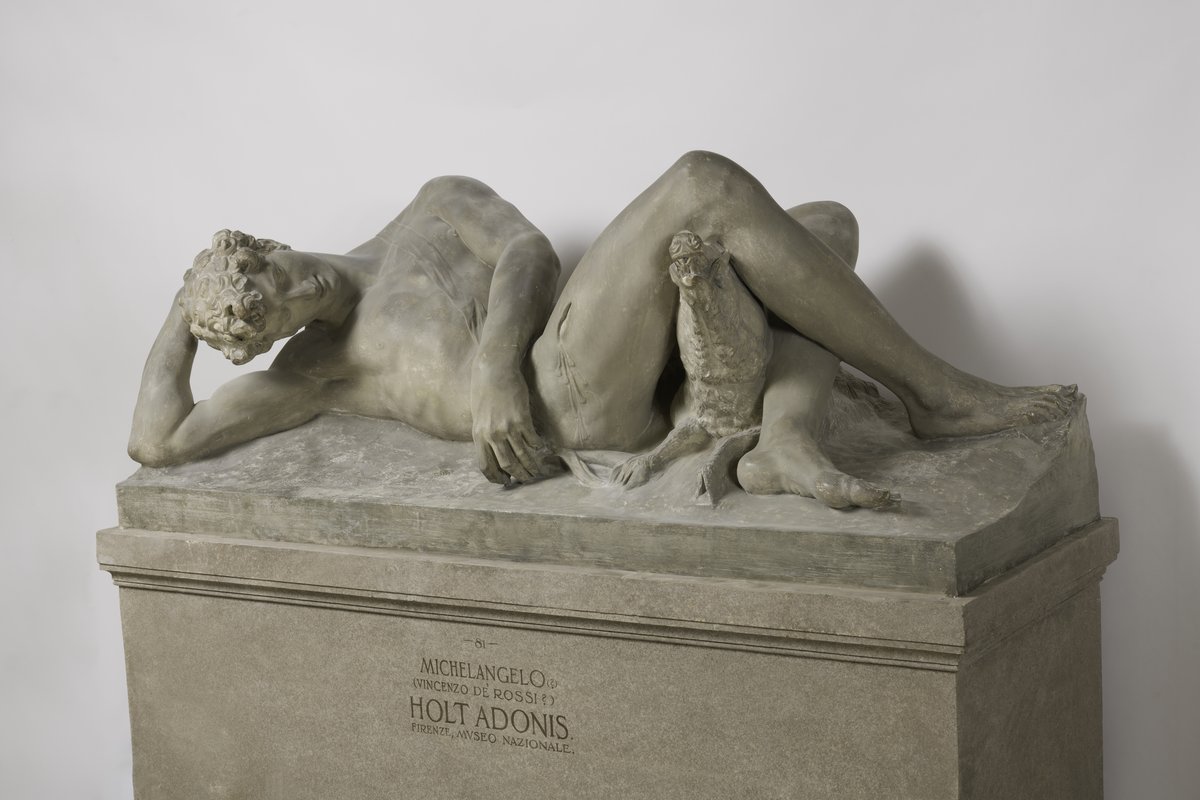Dying Adonis
Vincenzo de' Rossi, Michelangelo Buonarroti (previous attribution), Casting Workshop of the Kaiser-Friedrich-Museum (cast maker)- Artist
-
Vincenzo de' Rossi
Fiesole 1525 – 1587 Florence
Michelangelo Buonarroti
(previous attribution)
Caprese, 1475 – Rome, 1564
Casting Workshop of the Kaiser-Friedrich-Museum
(cast maker)
Berlin, first half of the 20th century
- Dated
- ca. 1565 (original), 1909 (cast)
- Classification
- sculpture, plaster cast
- Medium
- plaster cast
- Dimensions
- 68 × 167 × 63 cm
- Inv.no.
- Rg.245
- Department
- Sculptures - Plaster casts
- Current Location of the Original Artwork
- Italy, Florence, Museo Nazionale del Bargello
Vincenzo de’ Rossi, a native of Fiesole who began his career as a sculptor in the workshop of Baccio Bandinelli (1488—1560), worked in Florence and Rome in the mid-sixteenth century. He completed the marble sculpture of the Dying Adonis around 1565. The statue was later taken to the Villa del Poggio Imperiale, the residence of Isabella de’ Medici. For a long time, art historians attributed the work to Michelangelo, as it faithfully evokes his allegorical recumbent figure of Night in the Medici Chapel of the church of San Lorenzo in Florence. In the first half of the twentieth century, however, art historians identified the work as one of the regular commissions received from Cosimo de’ Medici by Vincenzo de’ Rossi after his return to Florence in 1560. When the Museum of Fine Arts ordered the plaster cast, the statue was still considered to be by Michelangelo. Once the authorship of the artwork had been properly determined, the inscription on the base of the cast in the Renaissance Hall was altered.
